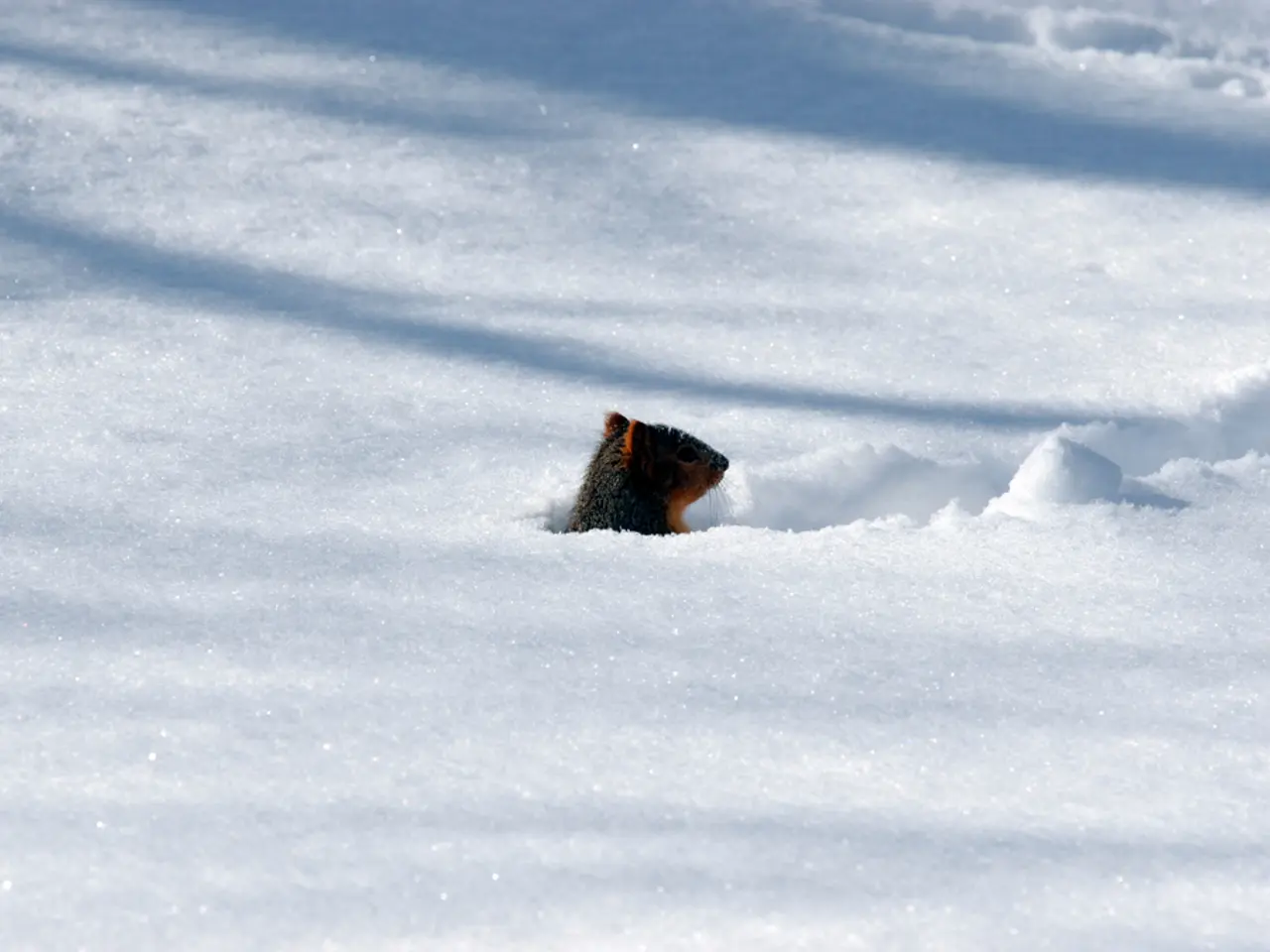Outdoor Winter Meditation and Mindfulness Techniques that Ignite Awe and Astonishment
Transform your winter days into moments of calm and renewal with outdoor meditation practices. Here's a guide to help you make the most of the cold weather, using mindful movement, breathwork, and nature connection to maintain warmth, focus, and deepen presence.
Outdoor meditation during winter offers a unique opportunity to deepen your practice beyond indoor limitations. By combining breathwork, body awareness, and nature connection, you can maintain warmth, calm your mind, and deepen your presence.
Breathwork Techniques
Pranayama practices such as Nadi Shodhana (Alternate Nostril Breathing) and Ujjayi (Victorious Breath) can help calm your nervous system, generate internal heat, and enhance focus during cold conditions. Practice warming breathwork techniques like the 4-7-8 method or bellows breathing to generate internal heat during winter meditation.
Mindful Movement
Incorporate gentle yoga or slow, conscious walking to awaken and stimulate circulation, keeping the body warm while sustaining meditative awareness. Morning yoga can energize the muscles and organs, while evening practices like Yoga Nidra or chanting bowls offer relaxation. Engage in mindful walking or winter hiking with full sensory engagement—watching, listening, and moving slowly—to ground yourself and sustain presence despite the cold. Techniques like Forest Therapy (Shinrin Yoku) and grounding by touching tree bark or sitting by a tree can enhance connection and warmth through nature.
Layering and Positioning
Bundle up with appropriate clothing to minimize heat loss while remaining comfortable for meditation or movement outdoors. Sitting near a fire or natural wind shelter can help prolong outdoor sessions. Use waterproof materials like foam pads, waterproof cushions, or insulated mats to create barriers between you and frozen ground during extended winter meditation sessions. Layer waterproof materials beneath the body during winter meditation to prevent heat loss and moisture absorption.
Inner Reflection
Use the winter season's natural invitation to slow down and turn inward. Combine outdoor meditation with self-study (Svadhyaya) and journaling to reflect on personal growth and resilience during the dark, cold months.
Tai Chi and Nature Connection
Tai Chi's flowing movements create internal heat while connecting deeply with winter's energy. Set up your winter meditation space near natural windbreaks, such as evergreen trees or garden walls, for protection from harsh winds while maintaining connection to winter's beauty.
Even five minutes of daily outdoor winter meditation can transform your relationship with the season and enhance overall well-being. So, step outside and embrace the winter, and let it become a powerful tool for renewal, resilience, and deepened awareness.
- Embrace the winter by practicing outdoor meditation, using techniques like Nadi Shodhana and Ujjayi breathwork to generate internal heat and calm your mind.
- Combine gentle yoga or slow, conscious walking with your meditation practice to awaken circulation, relax, and sustain a deeper presence outdoors.
- Bundle up in appropriate clothing and layer waterproof materials to stay comfortable and prevent frostbite during extended outdoor meditation sessions.
- Take advantage of winter's invitation to slow down by practicing self-study and journaling for personal growth and reflection.
- Incorporate Tai Chi into your winter meditation routine for a flow of movements that create internal warmth while connecting with winter's energy.
- Surround yourself with nature's beauty by setting up your meditation space near windbreaks, such as trees or garden walls, to fully engage all senses in the meditation experience.




